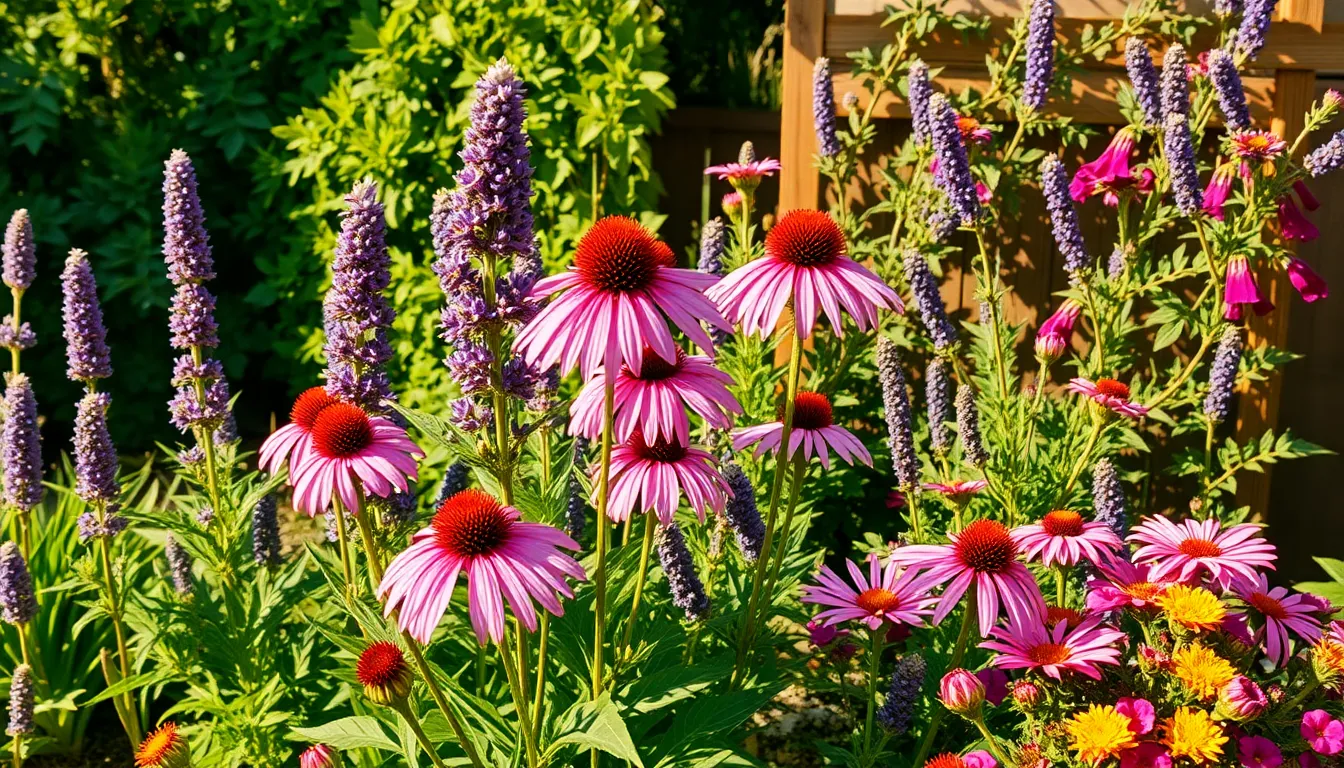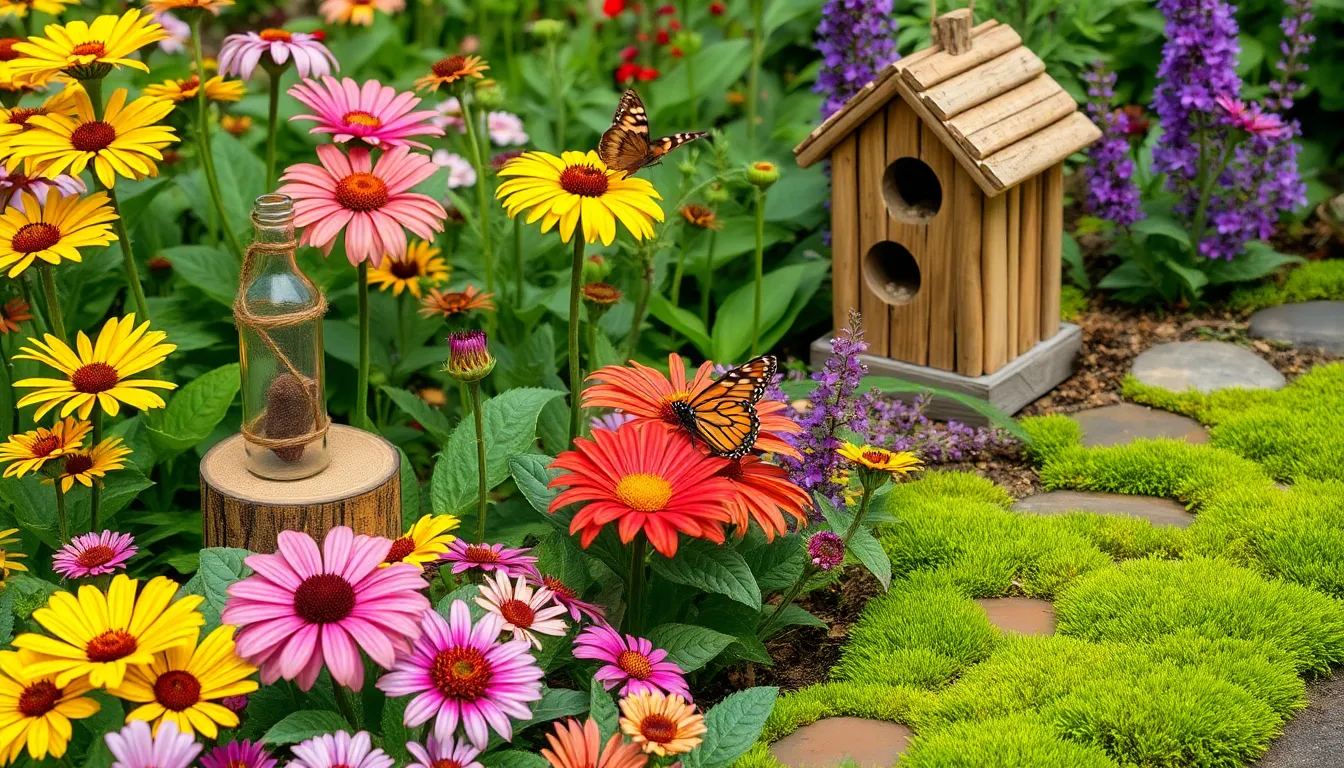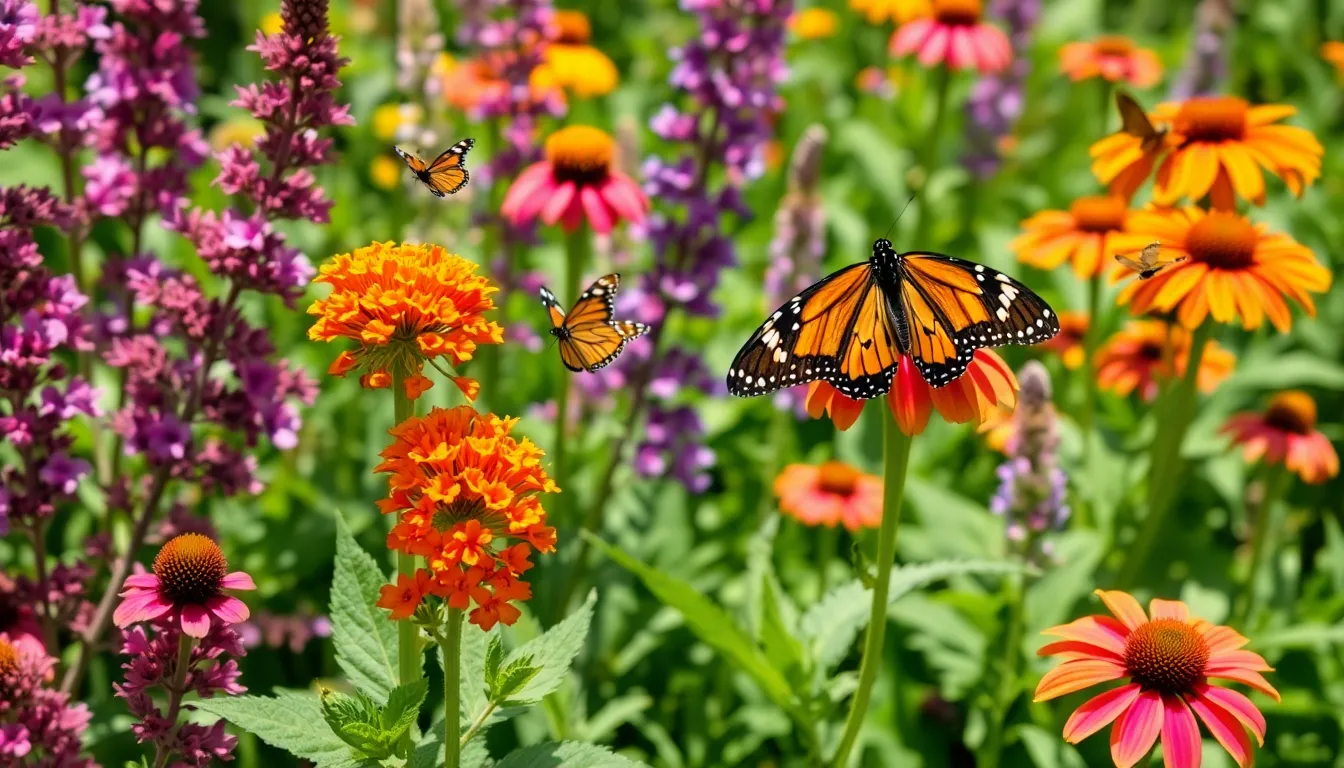Imagine stepping into your garden and being greeted by the vibrant dance of butterflies flitting from bloom to bloom. Creating a butterfly garden isn’t just a feast for the eyes; it’s an invitation to these delicate creatures to find refuge and sustenance in your little patch of paradise. Whether you’re embarking on your first gardening adventure or have already cultivated a lush landscape, designing a butterfly-friendly garden can be a delightful and rewarding endeavor.
Butterflies play a crucial role in pollination, making them valuable allies in maintaining the health and beauty of our gardens. By selecting the right plants and creating the perfect environment, you can transform your garden into a sanctuary for these enchanting pollinators. In this article, you’ll discover eight essential elements that will make your butterfly garden not only stunning but also a haven for wildlife. Get ready to dig your fingers into the soil and bring your garden to life with the magic of butterflies.
Choosing Butterfly-Friendly Plants
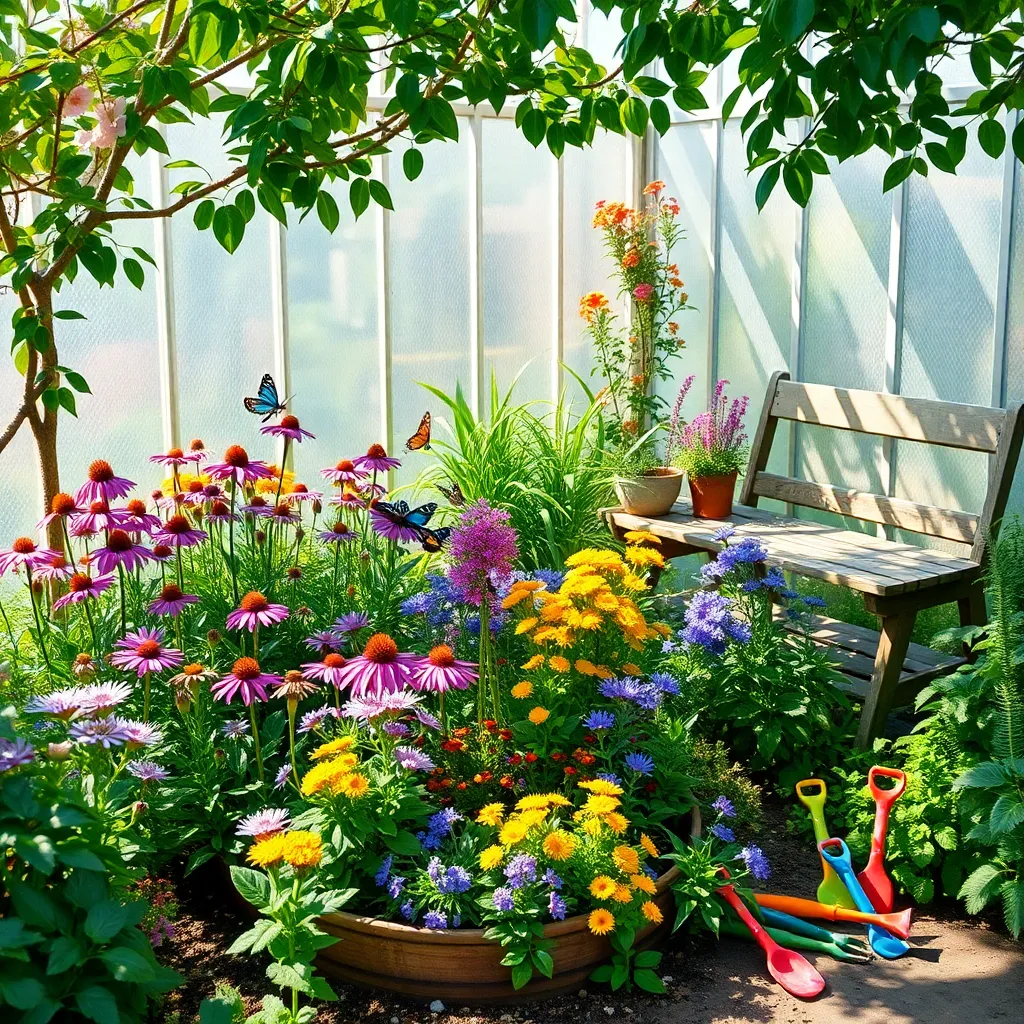
To attract butterflies to your garden, select plants that provide both nectar for adults and food for caterpillars. Native plants are often the best choice because they are well-suited to the local environment and butterfly species.
Diversity is key when choosing butterfly-friendly plants. By incorporating a mix of flowering plants that bloom at different times, you can ensure a continuous food source throughout the growing season.
Consider adding milkweed, a crucial host plant for monarch butterflies, which thrives in well-drained soil with full sun exposure. Water your milkweed regularly until established, then reduce watering to once a week, allowing the soil to dry out between waterings.
Experienced gardeners can enhance their butterfly garden by planting herbs like dill and fennel, which are beloved by swallowtail caterpillars. These herbs prefer slightly acidic to neutral soil and should be watered deeply, ensuring the top inch of soil remains moist.
Creating a Nectar-Rich Environment
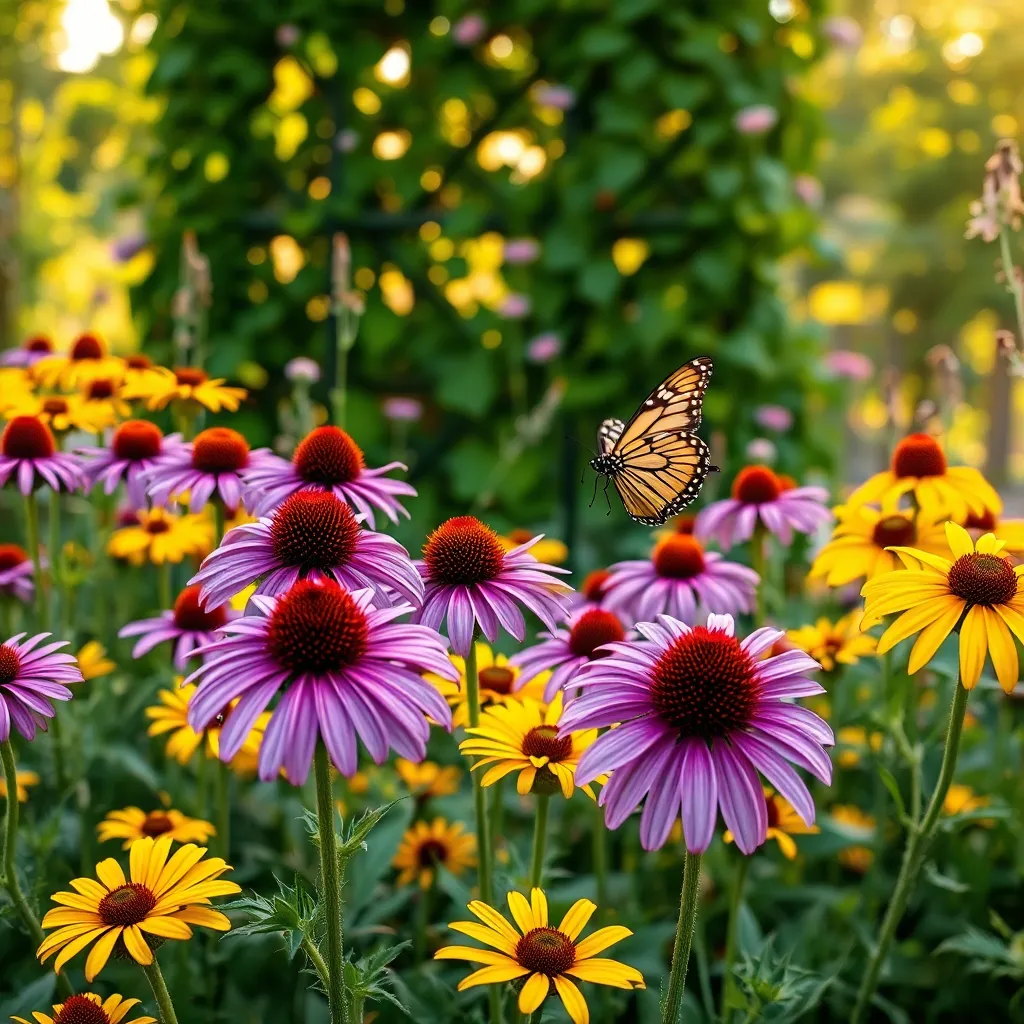
To create a nectar-rich environment, start by selecting flowers that bloom continuously throughout the growing season. Opt for plants like lantanas, zinnias, and coneflowers, which are known for their long-lasting blooms and high nectar production.
Consider planting in clusters to make it easier for butterflies to locate your garden. Grouping plants of the same species not only enhances visual appeal but also provides a dense source of nectar that attracts butterflies more effectively.
Ensure your soil is well-draining and rich in organic matter, as this supports healthy plant growth. Incorporate compost or well-rotted manure into the soil before planting to boost fertility and moisture retention capabilities.
Watering is crucial, especially during dry spells, but be mindful not to overwater. Aim to keep the soil consistently moist but not soggy, as overly wet conditions can lead to root rot and reduce nectar production.
For advanced gardeners, try adding a variety of flowering heights to your garden. This not only creates a more attractive landscape but also caters to different butterfly species, as they may prefer nectar sources at varying levels.
Designing with Host Plants
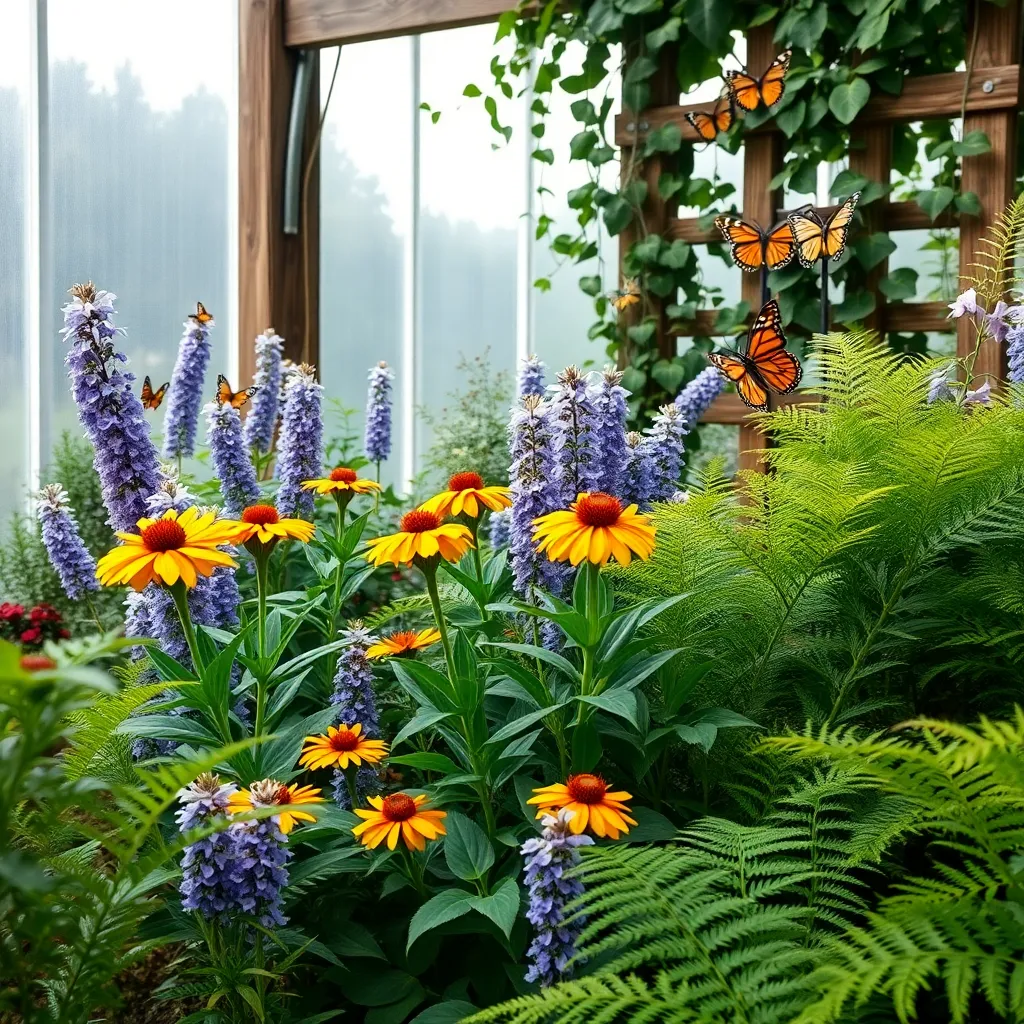
Designing with host plants is a key strategy to creating a thriving butterfly garden. By selecting the right host plants, you provide a place for butterflies to lay eggs and for caterpillars to feed, ensuring a continuing butterfly presence in your garden.
Aim to incorporate a variety of native host plants, as these will attract local butterfly species. For example, milkweed is a must-have for monarchs, while dill and fennel are favorites of the swallowtail butterfly.
It’s essential to plant your host plants in sunny locations, as butterflies are sun-loving creatures. Ensure the soil is well-draining, and amend it with compost to provide the necessary nutrients for plant growth.
Water your host plants regularly, especially during dry spells, but avoid overwatering, which can lead to root rot. Mulching around the base of plants helps retain moisture and suppress weeds.
For an advanced tip, consider planting in clusters to make it easier for butterflies to locate the plants. Grouping similar host plants together not only enhances the visual appeal but also increases their effectiveness in attracting butterflies.
Incorporating Water Features
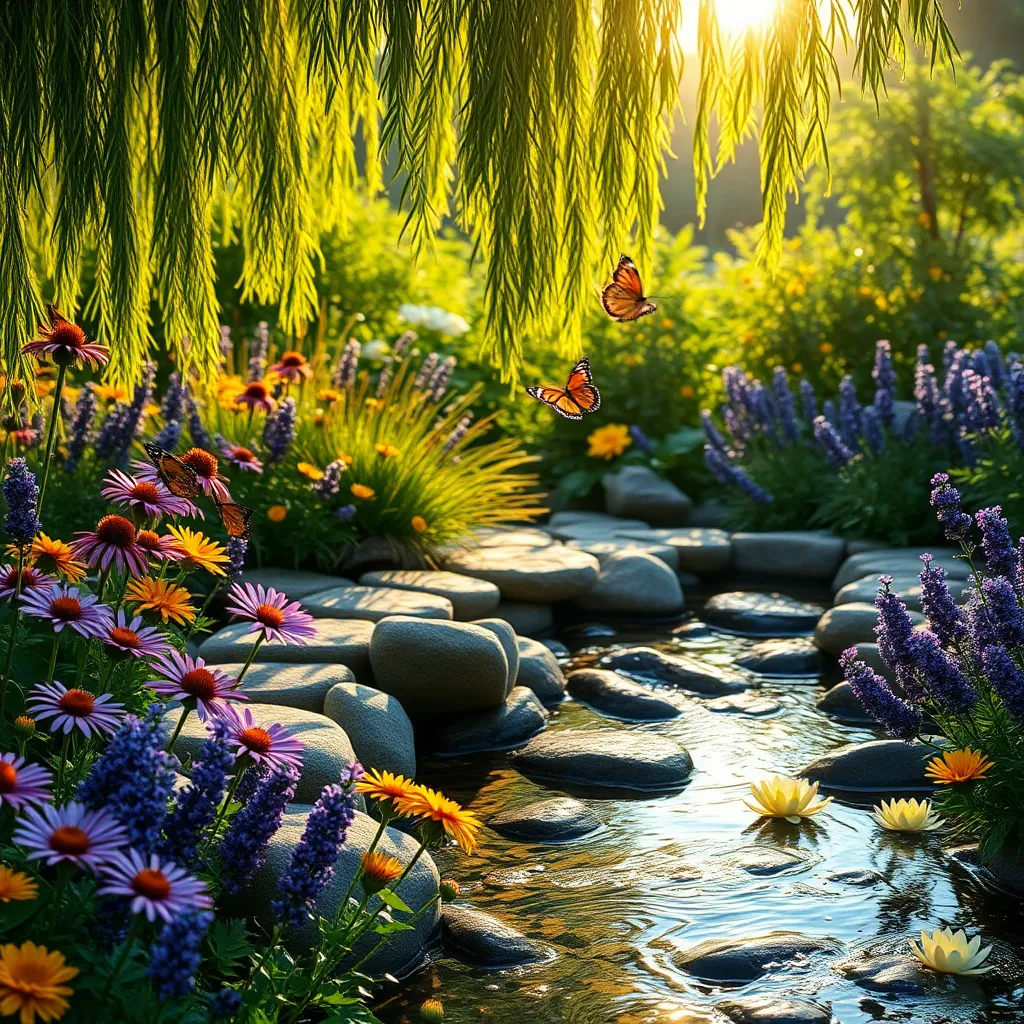
Water features can transform your butterfly garden into a tranquil oasis while providing essential hydration and rest for butterflies. A small pond or a gently bubbling fountain can attract not only butterflies but also other beneficial pollinators, enhancing biodiversity in your garden.
Consider adding a shallow birdbath with partially submerged stones to create landing spots for butterflies. Butterflies need shallow water or damp areas to drink safely, so ensure the water is just a few millimeters deep, or include stones that rise above the water level.
Placement of your water feature is crucial to its success. Position it in a sunny spot, as butterflies are drawn to warmth, and ensure it’s easily visible from various points in the garden to maximize its allure.
Regular maintenance is key to keeping your water feature a haven for butterflies. Change the water every few days to prevent mosquito breeding and algae buildup, and clean the surfaces periodically to ensure the water remains clear and inviting.
Providing Shelter and Rest Areas
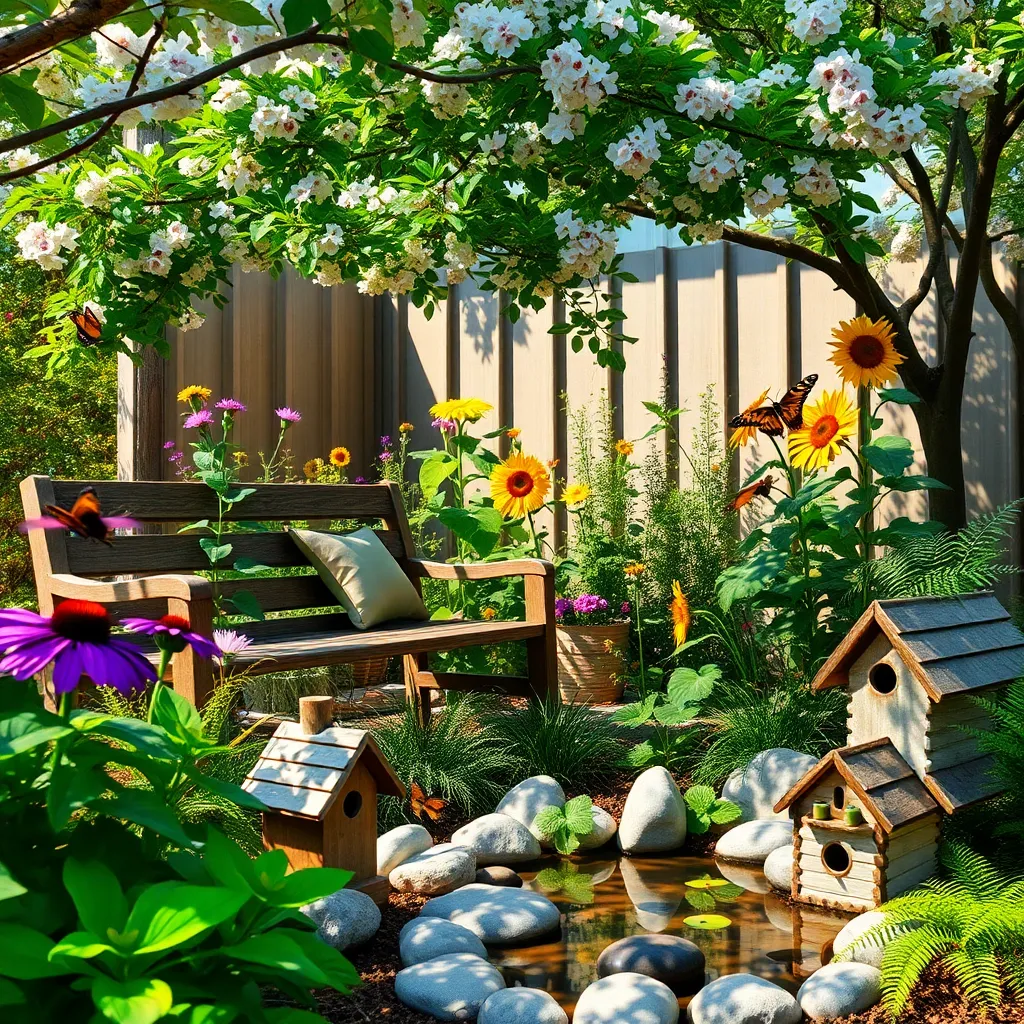
Creating shelter and rest areas in your butterfly garden is vital for attracting and keeping butterflies. These areas provide protection from predators and harsh weather, ensuring butterflies can thrive in your garden.
Consider using a variety of plants to create natural shelters within the garden. Dense shrubs like spirea or butterfly bush offer excellent coverage while also attracting butterflies with their blooms.
In addition to plants, include structures such as rock piles or butterfly houses. These elements give butterflies a place to rest and warm up on cooler mornings, as rocks retain heat from the sun.
For advanced gardeners, consider using trellises or pergolas to support climbing plants. This creates vertical shelter, offering butterflies more places to hide and rest while adding visual interest to your garden.
Sustainable Pest Control Methods
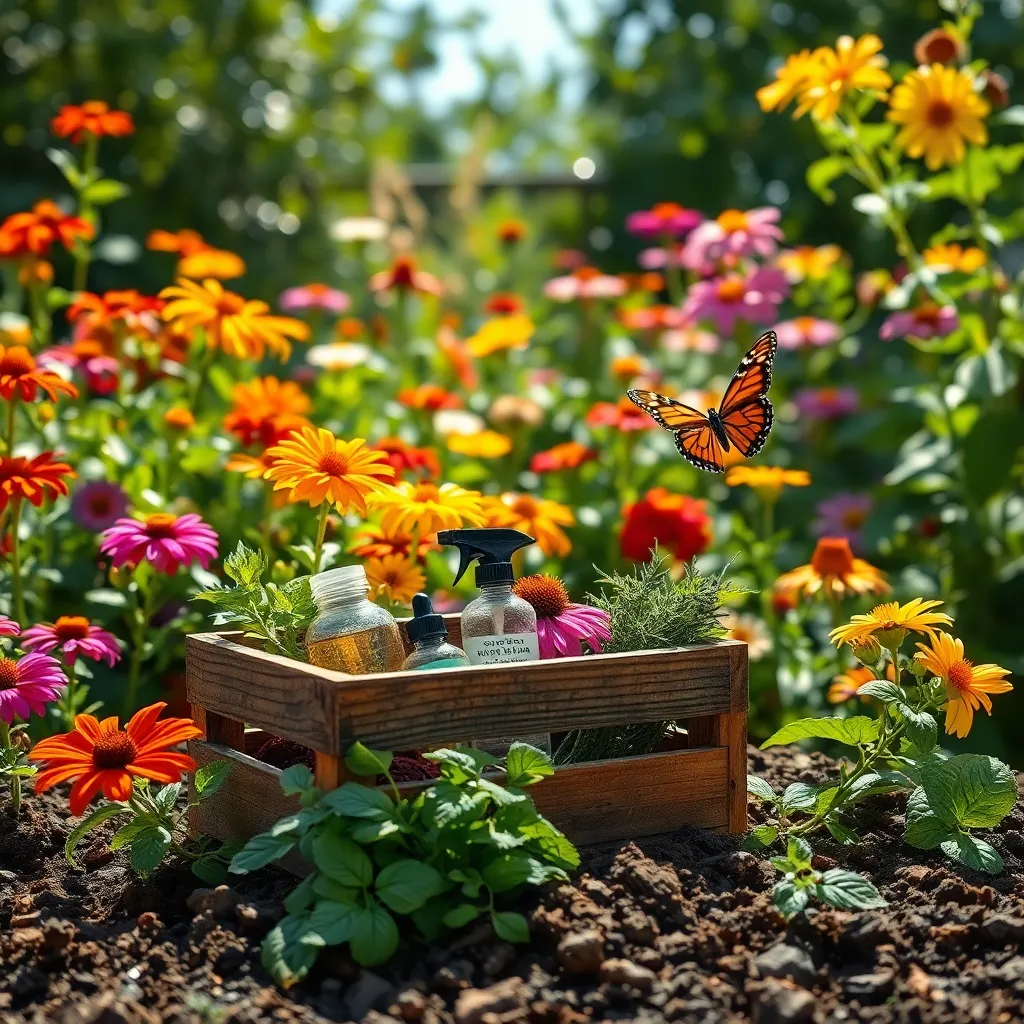
Incorporating sustainable pest control methods is crucial for maintaining a healthy butterfly garden. By focusing on environmentally friendly practices, you can protect both your plants and wildlife, ensuring a thriving ecosystem.
One effective method is to introduce beneficial insects, such as ladybugs and lacewings, which naturally prey on common garden pests. Creating a habitat that encourages these beneficial insects can be as simple as planting a variety of flowers and herbs that provide nectar and shelter.
Another approach is to use companion planting to deter pests. For example, planting marigolds among your butterfly-attracting flowers can help repel aphids and nematodes due to their strong scent. This practice not only reduces the need for chemical pesticides but also enhances the diversity of your garden.
Regular monitoring of plant health is also essential. By inspecting leaves and stems weekly, you can catch infestations early and remove affected areas before they spread. Keeping your garden tidy by removing debris and fallen leaves will minimize hiding spots for pests.
Seasonal Planting for Continuous Blooms
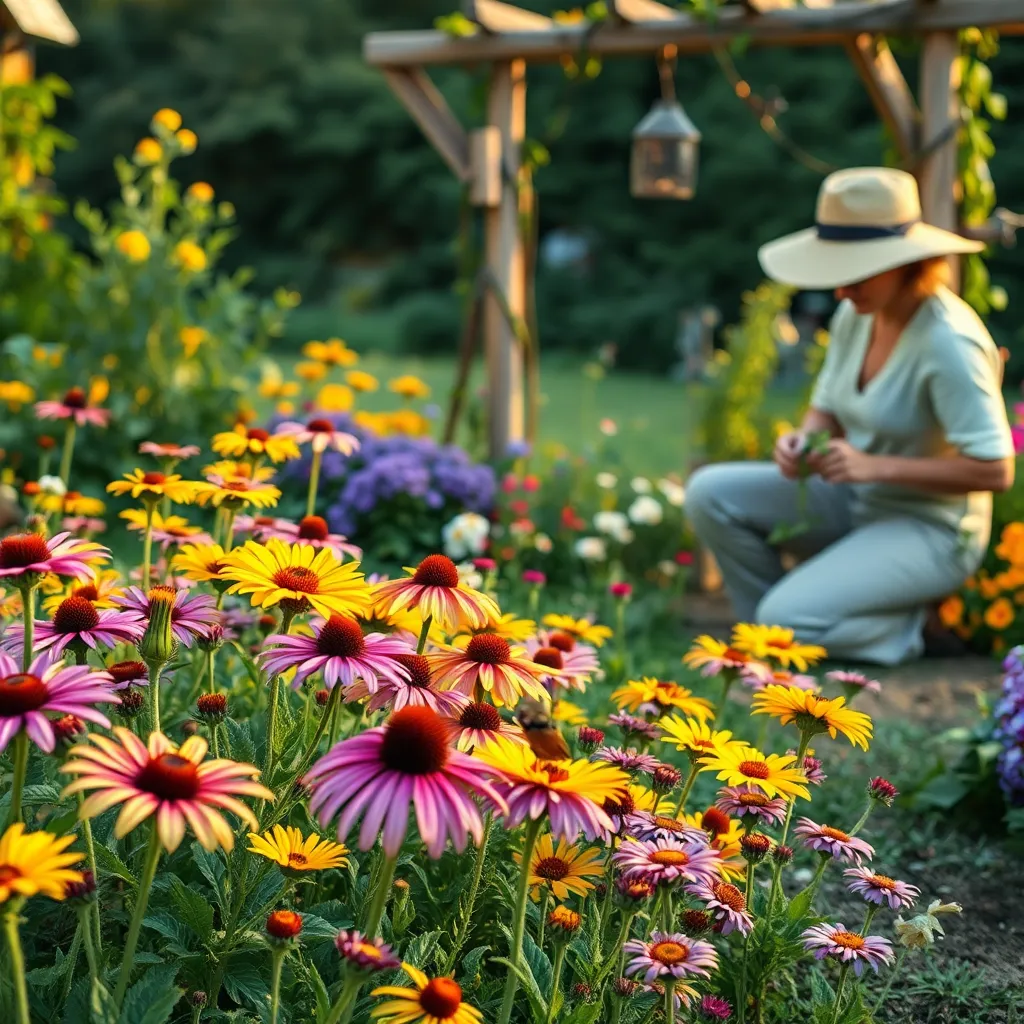
To enjoy continuous blooms in your butterfly garden, it’s essential to plant a variety of flowers that bloom at different times. Select perennials like coneflowers and black-eyed Susans for mid to late summer blooms, which will provide a reliable nectar source when annuals fade.
Integrating a mix of annuals and perennials ensures that your garden remains vibrant throughout the growing season. Start with early bloomers like crocuses and daffodils, which not only attract early pollinators but also kick off the blooming cycle in spring.
Advanced gardeners can experiment with successional planting to achieve a seamless transition of color. This involves planting in layers; for example, pairing early bloomers like lavender with late-season asters can create a dynamic display that evolves over time.
It’s crucial to consider soil and watering needs to maintain plant health and maximize blooms. Most butterfly-attracting plants thrive in well-drained soil and require about an inch of water per week, depending on weather conditions.
Maintaining a Healthy Butterfly Habitat
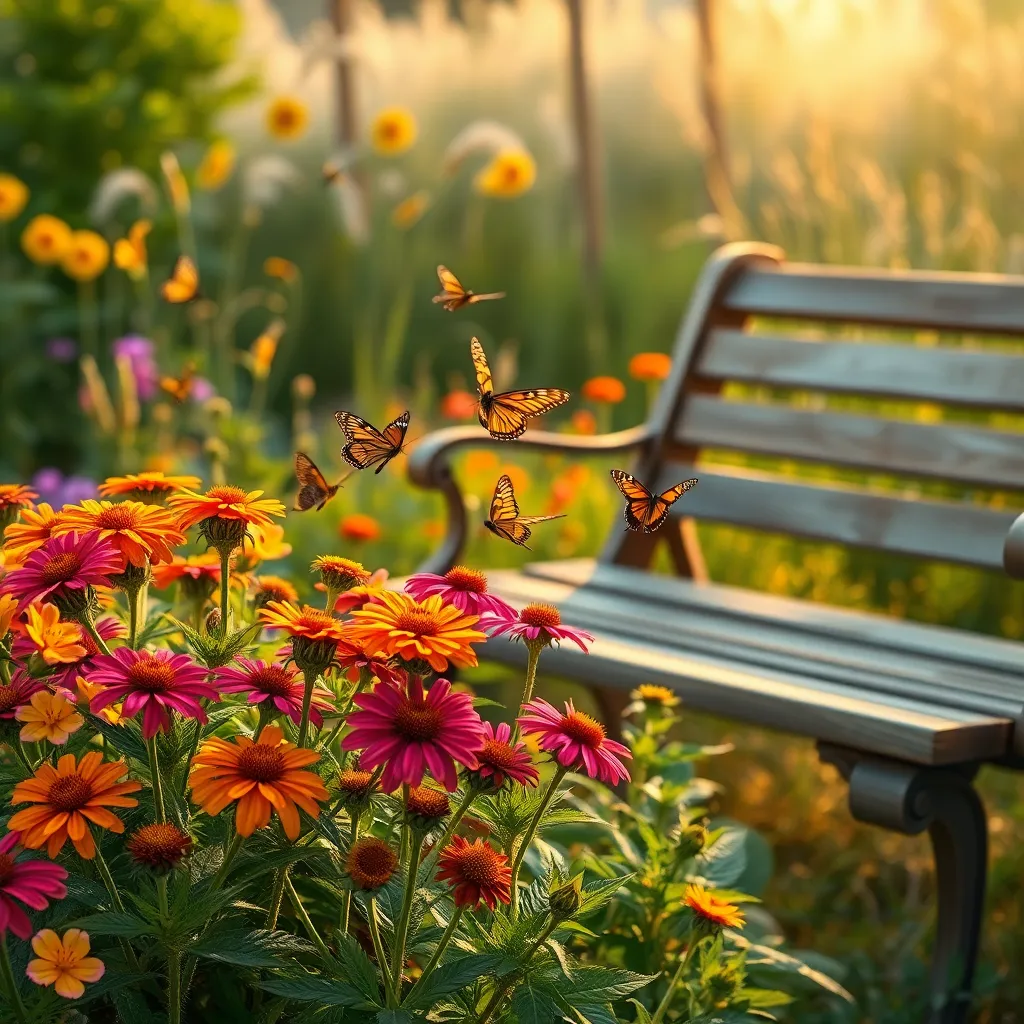
Creating a thriving butterfly habitat requires a keen focus on both plants and environment. Start by ensuring your garden offers a mix of nectar-rich flowers and host plants, which cater to the entire lifecycle of butterflies.
Choose plants that cater to local butterfly species to maximize the likelihood of visits. Native plants such as milkweed, asters, and coneflowers are excellent choices as they often require less maintenance and are suited to the local climate.
Incorporate a variety of plants that bloom at different times to provide continuous food sources throughout the growing season. Group these plants in sunny areas, as butterflies are cold-blooded and rely on the sun to warm up their wings for flight.
Maintain a pesticide-free environment to protect the delicate butterfly population, as many chemicals can be harmful to both caterpillars and adult butterflies. Instead, opt for natural pest control methods like introducing ladybugs or using neem oil to keep your plants healthy.
For more advanced gardeners, consider adding a shallow dish of water with stones for resting spots, or create mud puddles to provide minerals and salts. These small touches can make your garden even more inviting and beneficial for butterflies.
Conclusion: Growing Success with These Plants
Creating a flourishing butterfly garden is much like nurturing a thriving relationship. In this journey, we explored eight key essentials: understanding your partner’s needs, cultivating patience, fostering open communication, embracing vulnerability, nurturing shared interests, celebrating small victories, maintaining individuality, and ensuring mutual support. Each of these elements contributes to a harmonious environment where love can blossom and grow.
As an immediate step, take a moment to reflect on one area where your relationship could use a little more attention, and discuss it openly with your partner. This simple act of communication can reignite your connection and set the stage for deeper understanding.
Remember, successful relationships, just like gardens, require ongoing care and attention. Bookmark this article to keep these essentials at your fingertips, and revisit them as you and your partner continue to grow together.
Looking ahead, know that the seeds you plant today are the foundation for a lasting, loving partnership. With dedication and love, your relationship is destined to thrive. Save this guide as a trusted resource and watch your relationship transform into a beautiful, enduring connection.

